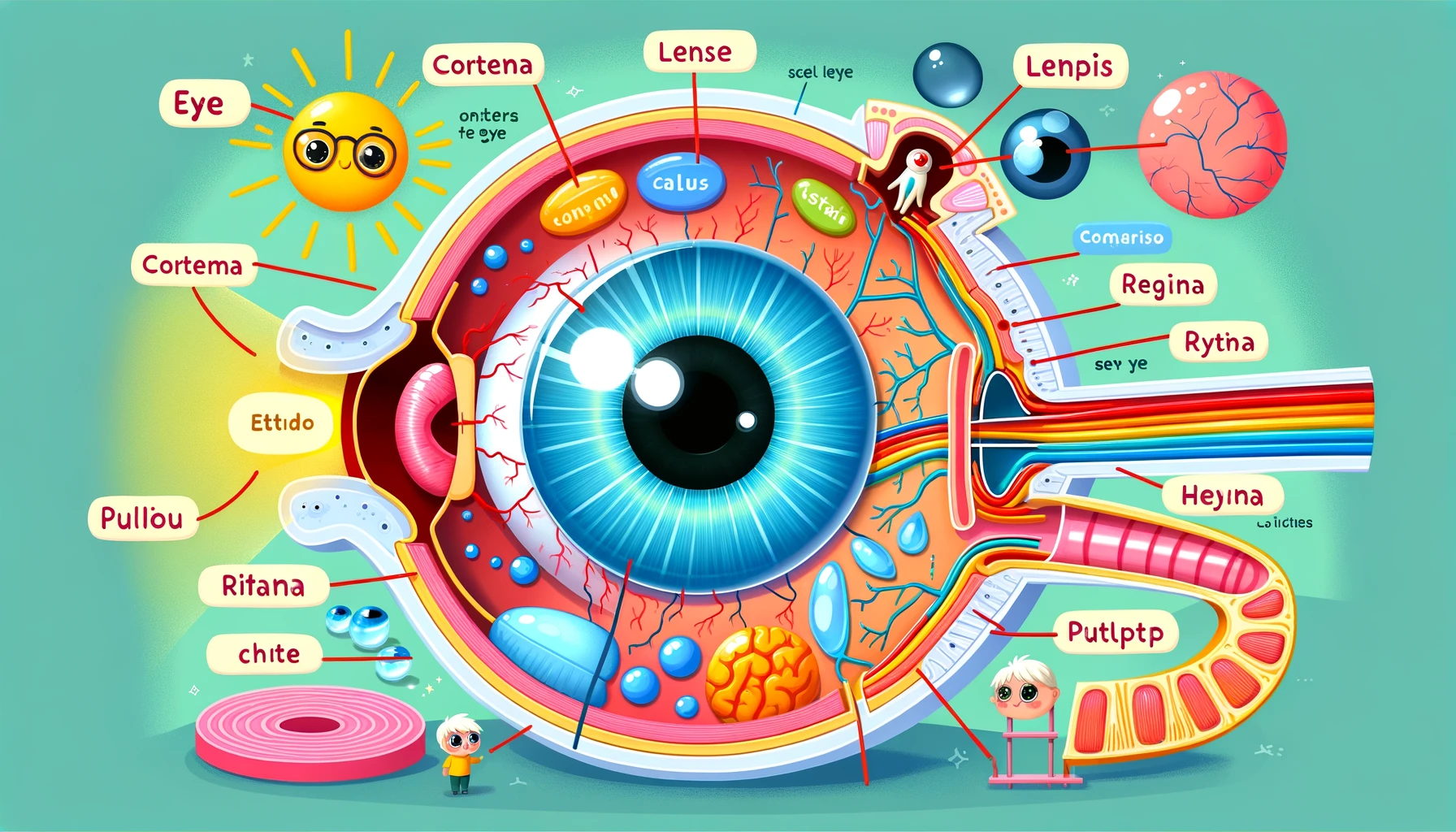How the Eye works: A Comprehensive Guide
How the Eye works: A Comprehensive Guide
Table of Contents
- Introduction to the Eye
- Light Entry into the Eye
- The Iris and Pupil
- Lens Focus
- The Retina and Photoreceptors
- Image Formation
- Transmission to the Brain
- Processing of Visual Information
- Common Eye Disorders
- Importance of Eye Health
- Conclusion
- References
How the Eye Works: A Comprehensive Guide
Introduction to the Eye The eye is a complex organ that allows us to perceive the world through vision. This article explores how the eye works, detailing the processes involved from light entry to the processing of visual information in the brain.
Light Entry into the Eye Light entry into the eye is the first step in the process of vision:
- Cornea: Light first passes through the cornea, the eye’s transparent outer layer, which helps focus incoming light.
- Aqueous Humor: After the cornea, light travels through the aqueous humor, a clear fluid in the anterior chamber of the eye, providing nutrients and maintaining intraocular pressure.
The Iris and Pupil The iris and pupil control the amount of light entering the eye:
- Iris: The colored part of the eye, the iris, contains muscles that adjust the size of the pupil.
- Pupil: The pupil is the central opening in the iris that regulates the amount of light entering the eye. It dilates in low light and constricts in bright light.
Lens Focus The lens focuses light onto the retina:
- Lens: Located behind the iris, the lens is a transparent, flexible structure that changes shape to focus light rays on the retina. This process is called accommodation.
- Ciliary Muscles: These muscles adjust the lens’s shape, making it thicker for near objects and thinner for distant objects, ensuring a clear image is formed on the retina.
The Retina and Photoreceptors The retina contains photoreceptors that convert light into electrical signals:
- Retina: The retina is a light-sensitive layer at the back of the eye that captures light and converts it into neural signals.
- Photoreceptors: There are two types of photoreceptors in the retina:
- Rods: Detect low light and are responsible for night vision.
- Cones: Detect color and are responsible for daytime vision and sharp central vision.
Image Formation The process of image formation involves several steps:
- Light Refraction: As light passes through the cornea and lens, it is refracted (bent) to focus on the retina.
- Inverted Image: The cornea and lens produce an inverted (upside-down) image on the retina.
- Phototransduction: Photoreceptors in the retina convert light into electrical signals through a process called phototransduction.
Transmission to the Brain Electrical signals are transmitted from the eye to the brain:
- Optic Nerve: The optic nerve carries electrical signals from the retina to the brain. It is formed by the axons of the retinal ganglion cells.
- Optic Chiasm: At the optic chiasm, some nerve fibers cross to the opposite side, ensuring that visual information from both eyes is processed by both hemispheres of the brain.
Processing of Visual Information The brain processes visual information to create the images we see:
- Visual Cortex: Located in the occipital lobe at the back of the brain, the visual cortex processes and interprets visual information.
- Integration and Perception: The brain integrates signals from both eyes to create a single, cohesive image. It also interprets color, movement, depth, and other visual cues.
Common Eye Disorders Several disorders can affect vision and eye health:
- Myopia (Nearsightedness): Difficulty seeing distant objects clearly.
- Hyperopia (Farsightedness): Difficulty seeing close objects clearly.
- Astigmatism: Blurred vision due to an irregularly shaped cornea or lens.
- Cataracts: Clouding of the lens, leading to decreased vision.
- Glaucoma: Increased intraocular pressure damaging the optic nerve.
- Macular Degeneration: Deterioration of the central part of the retina, affecting central vision.
Importance of Eye Health Maintaining eye health is crucial for preserving vision:
- Regular Eye Exams: Routine check-ups can detect eye conditions early and ensure proper treatment.
- Protective Eyewear: Wearing sunglasses and safety glasses can protect against UV rays and injury.
- Healthy Diet: Consuming foods rich in vitamins A, C, and E, as well as omega-3 fatty acids, supports eye health.
- Avoiding Strain: Taking breaks from screens and practicing good lighting habits can reduce eye strain.
Conclusion Understanding how the eye works helps us appreciate the complexity and importance of vision. From light entry to the processing of visual information in the brain, each step is vital for clear sight. Maintaining eye health through regular check-ups, protective measures, and a healthy lifestyle is essential for preserving vision and overall well-being.

<ⓒ WizardMedics (wizardmedics.com)>


